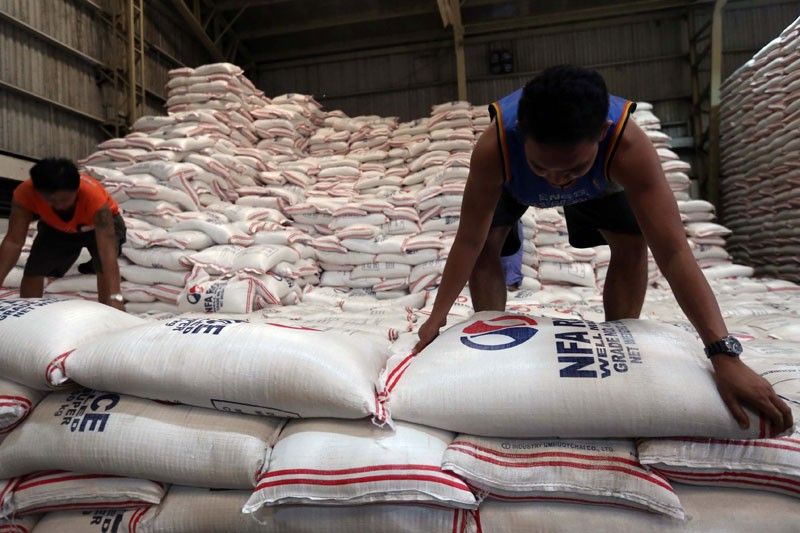After denying projections of higher rice imports this year and next, the Philippines is finally admitting that it had imported more rice in the first five months this year, totalling 2.3 million metric tons (MT) based on data released by the USDA Foreign Agricultural Service.
The surge in imports comes alongside a strategic shift in supplier, from Vietnam, the traditional source, to Thailand, Myanmar and Pakistan, which collectively contributed over 430,000 MT so far this year and Vietnam still as the top supplier with 1.8 MMT, said the USDA FAS report that was quoted by the Manila Standard.
The USDA forecasts rice imports for the entire marketing year (2024-25) to remain flat at around 4 million MT, with continued diversification expected. FAS noted that the expansion of supply sources offers a proactive approach to ensuring food security amidst rising global food prices.
The shift comes as traditional supplier Vietnam faces rising prices and tighter rice export quotas.
Rising global food prices and potential supply chain disruptions have prompted Vietnam to implement stricter export controls, leading to higher prices for the Philippines.
The USDA report also covers other key grains for the Philippines. Corn production is expected to decline slightly to 8.4 million MT due to recent typhoons and the presence of the fall armyworm pest.
The shortfall will likely be addressed through increased imports, with forecasts reaching 1 million MT for corn in MY 2024-25. Wheat imports are expected to remain steady at around 5.9 million MT.
The USDA report highlighted Philippines government efforts to boost domestic production through increased spending on inputs and machinery.
In another report, the Philippines would benefit from an expected decline in global rice prices once India relaxes restrictions on rice exports, reported Nomura Global Markets Research that was published by Business World.
“We expect the Philippines to be the biggest winner in Asia, given the high share of rice in its consumer price index (CPI) basket, its dependence on rice imports and recent rice import tariff reductions,” it said in a report.
“The Philippines will likely benefit most from falling international rice prices, via positive terms-of-trade effects and easing domestic food price inflation.”
Market participants are expecting India, the world’s largest exporter of white rice, to relax restrictions on rice exports soon. Last year, India suspended exports of non-basmati white rice amid concerns over domestic supply.
“Since India accounted for 35 percent of global rice exports in 2022, making it the top rice exporter in the world, its export restrictions pushed up global rice prices and hurt rice importing nations globally,” Nomura said.
“In our view, India is likely to gradually remove the restrictions on its rice exports in coming months,” it added.
Nomura said it sees “brighter” prospects for the Philippines, which is highly dependent on imported rice.
“Net rice imports accounted for 0.4 percent of its gross domestic product (GDP) in 2023, the highest in Asia. As such, lower global rice prices should have the most beneficial impact on the Philippines, followed by Indonesia,” it said.
The US Department of Agriculture (USDA) expects Philippine rice imports to hit 4.6 MMT this year, higher than the country’s Department of Agriculture’s projection of 3.9 MMT.
As of June 27, the Philippines had imported 2.31 MMT of rice, Bureau of Plant Industry data showed.
“Without price controls or subsidies, the pass-through to domestic rice prices is also significant and swift, contributing to more downward pressures on headline inflation, which is already set to be impacted by the government’s announcement of a substantial rice import tariff reduction,” Nomura said.
President Ferdinand "Bongbong" Marcos, Jr. last month signed Executive Order No. 62, which slashed tariffs on rice imports to 15 percent from 35 percent, until 2028.
The measure is expected to bring down retail rice prices by P6 to P7 per kilo, the Agriculture department said earlier.
Nomura noted the weight of rice in the Philippines’ CPI basket at 8.9 percent, “much higher” than its neighbors.
In June, rice inflation eased to 22.5 percent from 23 percent in May, the third straight month of slower rice inflation. Rice accounted for 45.2 percent of overall inflation, equivalent to 1.7 percentage points.
Roehlano Briones, senior research fellow of government think tank Philippine Institute for Development Studies, said rice prices could further decline if India eases its restrictions.
#WeTakeAStand #OpinYon #USDA #RiceImports
